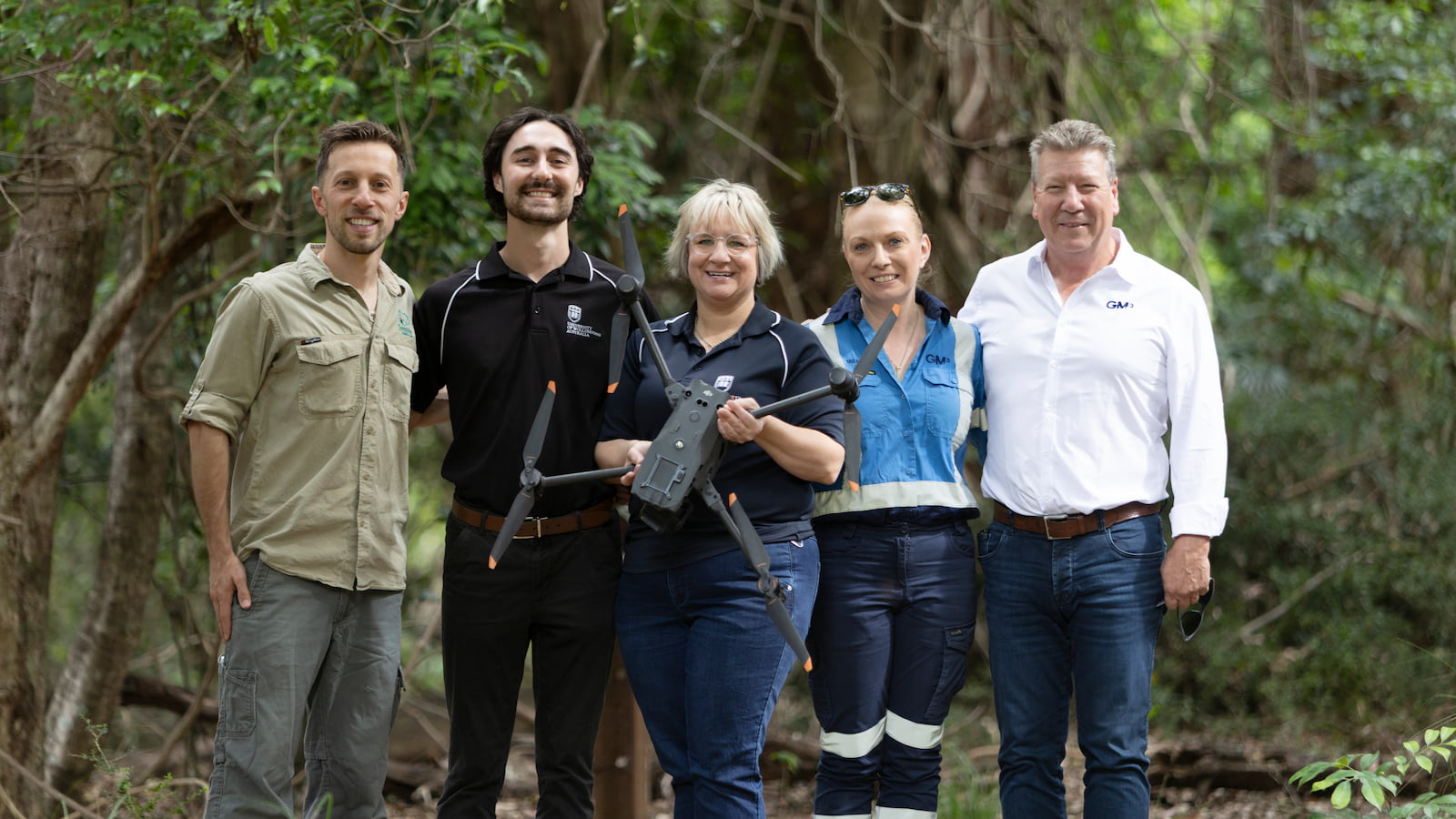November 13, 2025
Cutting-edge thermal drones reveal hidden strongholds of endangered koalas and gliders
Multi-industry collaboration delivers first published large-scale abundance mapping of both koalas and greater gliders across the Illawarra
ÁñÁ«ÊÓƵapp of ÁñÁ«ÊÓƵapp (UOW) researchers are part of a study that used modern thermal drone technology to uncover thriving yet previously under-reported populations of endangered koalas (Phascolarctos cinereus) and southern greater gliders (Petauroides volans) across the Illawarra Escarpment and Plateau.
Published this month in , the project, a collaboration between Jarrad Prangell and Kevin Fallon of Symbio Wildlife Park and UOW, represents the first large-scale abundance mapping of these two forest arboreal mammals in the region, providing crucial scientific baselines for long-term monitoring and conservation management.
The research model, designed by wildlife and drone pioneer Dr Chad Beranek, was conducted over two years. Night-time drones were flown over 47 carefully chosen sites in the region, repeatedly collecting data across more than 1,175 hectares of rough terrain across the Illawarra. Each flight used thermal imaging, spotlight verification, and 4K aerial video, allowing the team to detect and identify heat signatures of koalas and gliders hidden high in the canopy, making previously inaccessible landscapes surveyable for the first time.
“Modern thermal drone technology has revolutionised how we find and count cryptic wildlife,” said lead author Jordyn Clough, a PhD candidate in UOW’s Environmental Futures.
“These results reveal that the forests south of Sydney are far more significant for conservation than previously recognised. With modern drone technology, we’re finally seeing the full picture.”

In total, 56 koalas and 127 southern greater gliders were confirmed. Mean densities of 0.13 koalas per hectare and 0.17 gliders per hectare were estimated, providing valuable baseline data for the region.
Senior author said the project demonstrates how thermal drone surveys and statistical modelling can shape future conservation decision-making.
“We can now monitor wildlife across vast, steep and otherwise inaccessible forest systems,” Dr Mikac said. “This is the future of ecological research and a vital step in protecting Australia’s endangered species.”
The findings suggest both koalas and southern greater gliders persist at low but stable densities, underscoring the ecological importance of the Illawarra’s protected bushland.

“This project shows what’s possible when collaboration, technology and conservation work hand-in-hand,” said Kevin Fallon, Senior Business Manager and Chief Drone Pilot at Symbio Wildlife Park.
“Together with all of our partners, we’ve delivered a scientific milestone right here on our doorstep, that identifies the Illawarra and the Southern Sydney Surrounds as critical strongholds for both koalas and southern greater gliders.
“Especially now, following on from fires, floods, and threats of Chlamydia encroaching these important populations, having a better understanding for future species management programs is crucial as they provide a replicable baseline for all future monitoring programs to compare against.”
The project was co-funded by Symbio Wildlife Park and GM3 through the GM3 Community & Environmental Investment Program, and conducted under guidance and collaboration with Conservation Partners Ptd Ltd, the research team from UOW, WaterNSW and the Department of Climate Change, Energy, the Environment and Water’s Saving our Species Greater Glider team.
About the research
‘Abundance estimates of koalas (Phascolarctos cinereus) and southern greater gliders (Petauroides volans) on the Illawarra Range, New South Wales, from spatiotemporally-replicated thermal drone surveys,’ by Clough, J., Prangell, J., Fallon, K., Beranek, C.T., & Mikac, K.M., was published in Australian Mammalogy:
